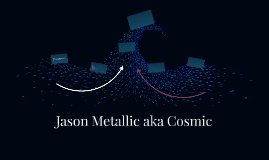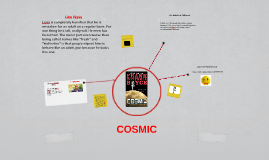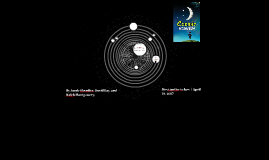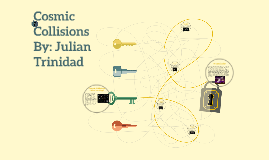Cosmic
Transcript: Cosmic collisions between galaxies happen every now and then throughout our expanding universe, but what exactly are they? A cosmic collision, at least on a galactic scale, is the collision between two stellar entities within the universe. A galactic collision is a cosmic collision of astronomical size and causes many diverse effects to both galaxies. Galactic collisions - Beginning "Colliding Galaxies." Colliding Galaxies. N.p., n.d. Web. 16 May 2016. <http://csep10.phys.utk.edu/astr162/lect/galaxies/colliding.html>. Galactic Collisions - End "Galaxy Collisions." Galaxy Collisions. N.p., n.d. Web. 16 May 2016. <http://cas.sdss.org/dr6/en/proj/basic/galaxies/collisions.asp>. Galaxies, as we currently understand, are very far apart from each other, and most of them happen to be moving away from each other, as well; however, in the case of the Milky Way and Andromeda, certain galaxies happen to be moving closer to each other. This phenomena is caused by the galaxies' pull towards each other. Because both galaxies are moving closer, this often results in the formation of tidal tails, or clouds of interstellar gas and stars coming from a galaxy. Now that the galaxies are approaching each other at an alarming rate, their size and rotational speed increase dramatically. The two galaxies eventually, over the course of millions of years, collide and form a galaxy merger, which is a (usually) fiery emission of energy from the centers of both galaxies. These two colliding galaxies, as they release copious amounts of energy into the universe, do eventually merge to create a new galaxy as a result of the collision. Sources Cosmic Collisions By: Julian Trinidad Cosmic Collisions - What are they? In Conclusion Galactic Collisions - Middle "Tidal Tails." Cosmos. N.p., n.d. Web. 16 May 2016. <http://astronomy.swin.edu.au/cosmos/T/Tidal+Tails>. As mentioned before, the pull between two galaxies causes tidal tails to form. As the two approaching galaxies come closer, the tidal tails become longer and thinner. Also, because both galaxies are moving closer due to their pulls on each other, the galaxies experience an acceleration on their rotational speed and size, as the pull from one galaxy to another causes this phenomena to occur. Galactic Collisions - End (cont.) Now that the two (or more) galaxies have collided and formed a completely collided and merged to form a new galaxy, this galaxy will then begin to develop, as did its predecessors. Eventually, the newly-born galaxy will go on to follow the cycle the previous galaxies before it have - growing until they eventually collide with another galaxy. As we have observed, cosmic collisions on the galactic scale are astronomical events of an equally-impressive size. If anything, galactic collisions are the causes of birth of newer galaxies, and as such, continues the life of the universe (at least on the galactic scale). Throughout time, we will be able to observe many galactic collisions, as well as our own! "Galaxy Collisions." Www.cfa.harvard.edu/. N.p., 03 Oct. 2013. Web. 16 May 2016. <https://www.cfa.harvard.edu/news/su201313>.

















